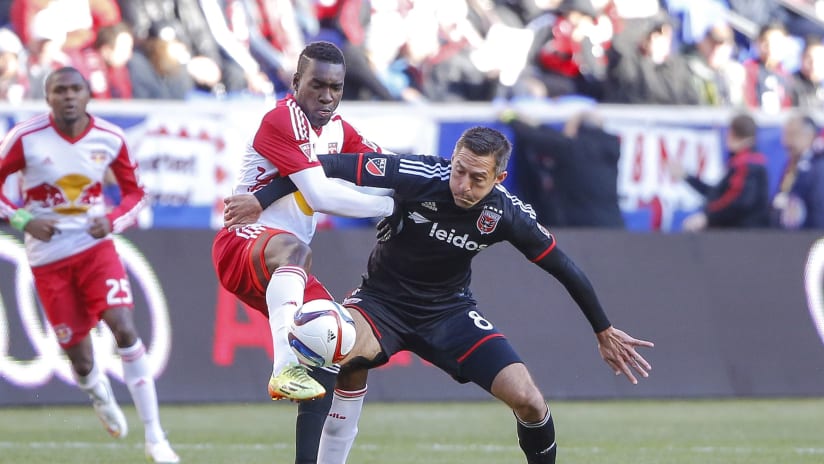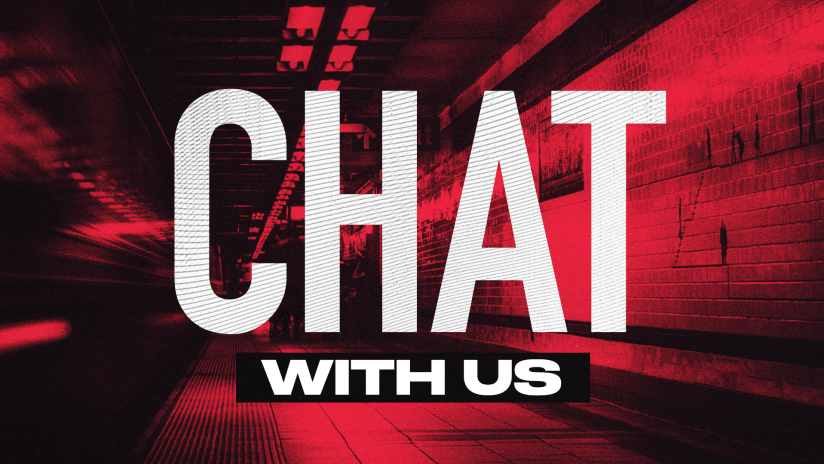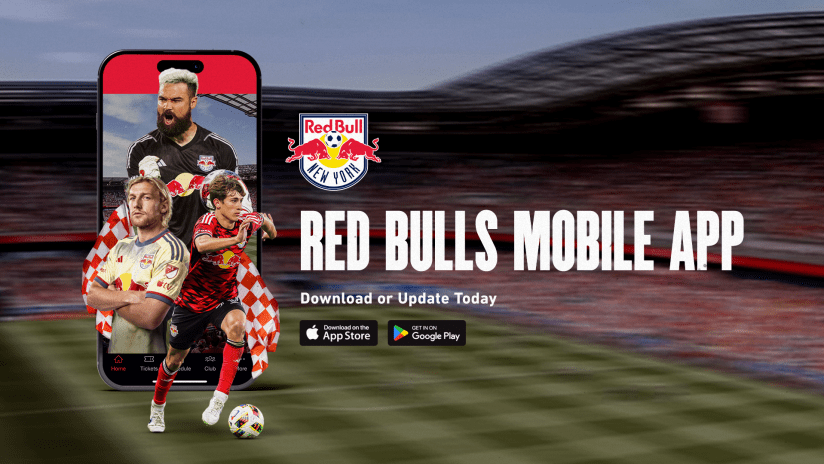
Today sees a match which could be a potential Eastern Conference decider as DC United come to the Red Bull Arena as leaders of the league, 5 points ahead of the 3
rd
placed Red Bulls.
DC manager Ben Olsen has used a narrow 4-4-2 shape throughout the course of the season, with two narrow wide men coming close to the two central midfielders, Arnaud and Kitchen. The formation can come across as a number of different shapes due to the flexible movements of the midfield and attack, often forming somewhat of a 4-2-2-2 with the wide players in between the midfield and strikers.
With a narrow midfield, it is common to see both Kemp and Franklin driving forward into high positions in their full-back roles whilst Arnaud can drop to cover the spaces left for balance.
The midfield has rarely changed throughout the season, with DeLeon, Kitchen, Arnaud and Rolfe all in the top 5 for DC’s highest appearances. One could take from this just the importance which Olsen places on this area of the pitch, being reluctant to vary it for the development of synergy and understanding between the quartet.
Man-Marking
Without the ball, DC United look to defend through a man-marking scheme where they are generally happy to match up man-for-man across the 20 outfield players.

The concept of marking each man can theoretically come across as a simple but very effective tactic, however as the great Austrian manager Ernst Happel once said, “if you mark man-to-man, you’re sending out eleven donkeys”. There are many underlying issues with man-marking which the Red Bulls could look to target come the game tonight.
On an individual basis, one of the key issues is that the defender has the extremely difficult task of constantly predicting his marker’s every move. Obviously one can manage this on quite a number of occasions throughout a game however rarely is a player capable of anticipating the attacker successfully enough to justify man-marking as a sustainable method of defending.
Another critical issue comes from a structural perspective. If every defender is tracking the movements of the opposition then the attackers will have no difficulty in disorganising the opposition shape. This could be in the form of, for example, a central midfielder moving to the wing whilst the winger comes inside, effectively opening and exploiting a space in the centre of the pitch. By being a completely reactive defensive tactic, the defending team literally provides the attackers the ability to have a significant degree of control over the defensive shape.
Finally, a third issue is the dependency on individual success. By marking man-to-man, the defending team is very reliant on the success in the individual 1v1 battles and so, if a defender fails in one of his challenges then there is a big risk of compromising all stability of the defensive structure. If an attacker is able to beat his man, then straight away he becomes free and, in most cases, if another defender pushes out to meet the immediate threat of the free attacker, then his original marker will be free for a pass. Following the initial beating of the marker, the attacking team have an immediate numerical superiority in the local space around the ball.
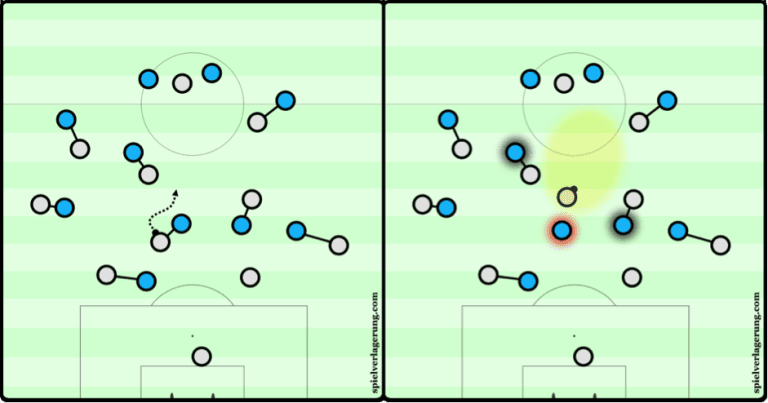
As shown in the images above, from a recent analysis of mine on a Borussia Dortmund game, we can see how once the attacker dribbles past his marker, he has space to run into without the pressure of another defender.
One positive Marsch could see is the number of good 1v1 players which the Red Bulls possess, with Mike Grella, Lloyd Sam as well as new signings Shaun Wright-Phillips and Gonzalo Veron all confident when taking on their man. Players such as these could be key in exploiting DC’s man-marking defensive scheme.
Midfield Orientation
The midfield of DC United is rather interesting as they utilise unorthodox roles for wingers, as the likes of Rolfe, Doyle and DeLeon all move inside towards the centre of the pitch. As a result of this, they usually benefit from a strong occupation of the middle of the pitch, which is often central to both their attacking and defensive strategies.
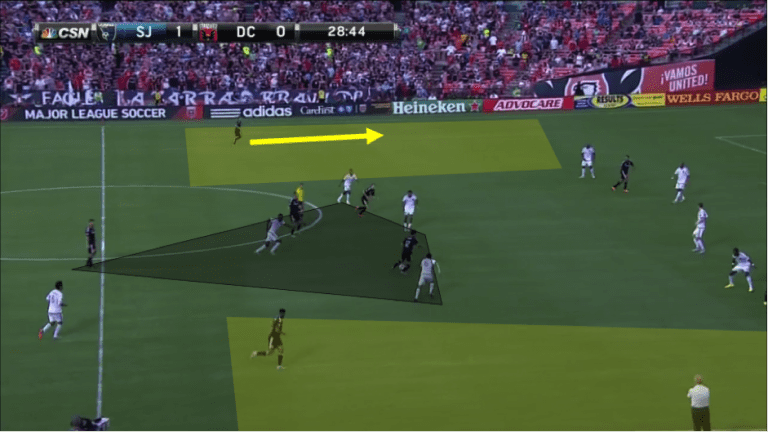
With 4 players in a very narrow position in the midfield, DC look to work through combinations through these spaces whilst leaving the wider areas free to the driving full-backs on the touchlines. This is not too dissimilar to the attacking strategy of the Red Bulls who also like to attack through the narrow 4-2-3-1 which we have become familiar with under Marsch in his first season at the Red Bull Arena.
The midfield look to open the central spaces through good movement off of the ball, which worked to some degree against San Jose but usually due to poor collective and individual decision making, they failed to capitalise.
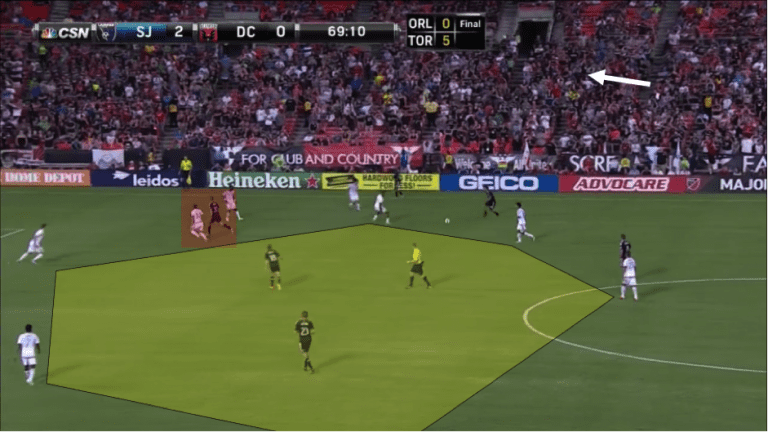
In the above example, we can see the highlighted DC midfielder driving forward which takes his marker with him, opening a massive space in the centre for a pass inside into a threatening position.
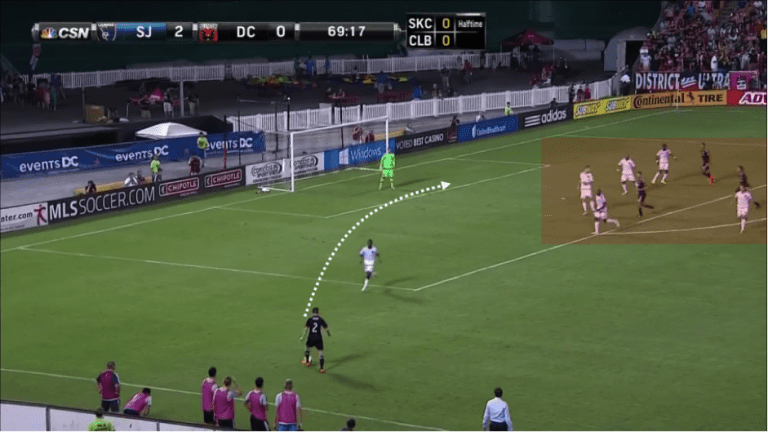
However, after being met with some good pressure from the recovering San Jose defender, Rolfe makes the wrong decision and looks to switch to Kemp at full-back, who puts in a cross. Although the cross finds a DC head, they miss a chance to bring the deficit to 1, highlighting the weaknesses which crossing has as a method of assisting the forwards.
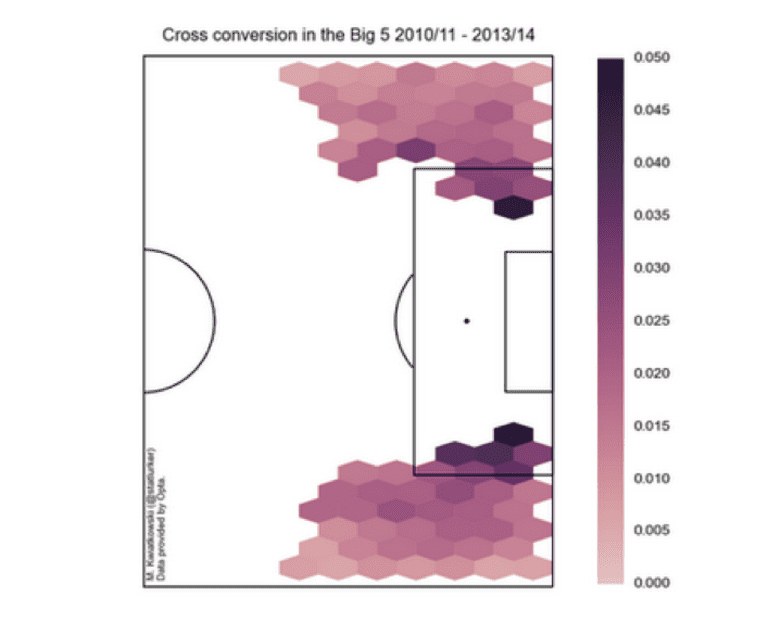
The above diagram is an analysis of the ‘top 5’ leagues crossing from the 2010/2011 to 2013/2014, depicting the conversion rate of crosses. The most dangerous area for crossing still only manages a 5% but these areas themselves are very difficult to get into in the first place. The cross which Kemp made in the example I showed above this has a typical conversion rate of about 1.5%.
Another advantage of this midfield, and one which the Red Bulls themselves have become used to this season, is the increased ability to counterpress. Counterpressing, translated from the German ‘gegenpressing’, means the action of pressing to regain ball possession immediately after losing it. It has a multitude of benefits for both defensive and attacking purposes, such as stopping counter-attacks and regaining the ball to maintain pressure. In Germany, where it has been developed the best, is even used as a direct attacking tactic at times, ex-BVB coach Jurgen Klopp calling it “the best playmaker”.
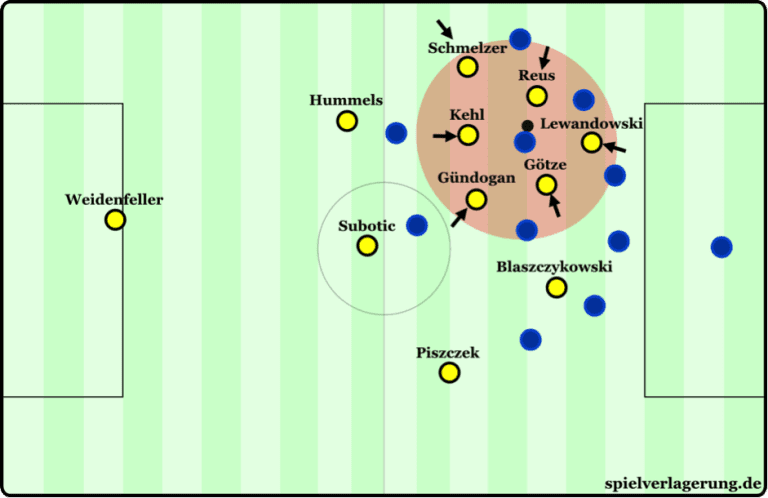
Above is Klopp’s Dortmund, as they have more players closer to the ball than the blue team, they are able to enforce an aggressive and stable counterpress.
With a large number of players in a central position close to the ball, both DC and the Red Bulls are good at counterpressing as, at the point where they lose the ball, they already have a large number of players nearby. By this, they can overload the original winner of the ball and press him to regain possession more effectively than a team who are further spaced out with a lesser number of players near to the ball.
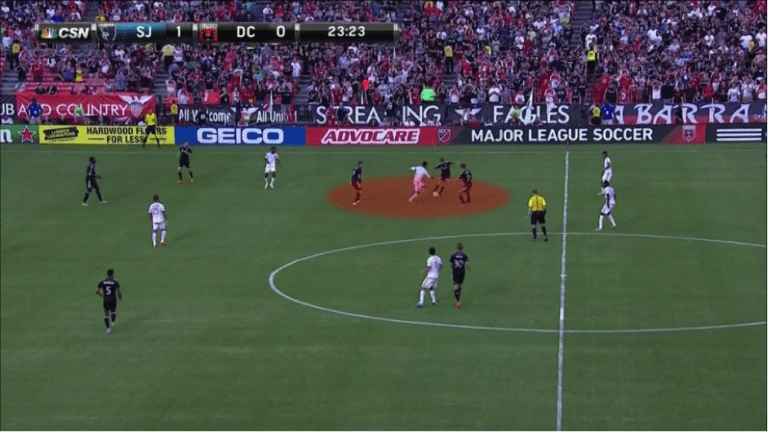
An example being above, where DC have lost possession though just a matter of seconds later, they are able to regain the ball and restart their attack from where they left off. In some cases, it can cause sizable issues for the opposition team as once they win the ball, players often start driving runs forward for a possible counter-attack. However if they are counterpressed immediately, they lose the ball and are even more disorganised due to the once-counter-attacking players now too far away to support.
For an in-depth explanation and analysis of counterpressing, we have a tactical theory article on the subject on Spielverlagerung - click here to open it in a new tab!
In their 2-0 win over DC United, San Jose had a clear defensive strategy of matching DC’s narrow midfield shape and looked to keep a horizontally compact block themselves.
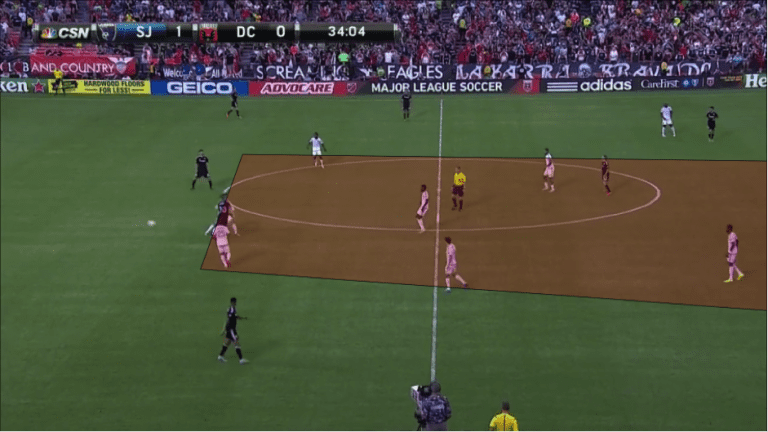
This was brilliantly effective as the eventual winners disrupted DC’s usual game and forced them often to playing it out to weaker wide areas as the likes of Arnaud and Rolfe failed to break through the compact central defence. Considering this is something which the Red Bulls practice week-in-week-out, Marsch’s system seems well-equipped to counteract the possession game of DC.
Attack Early
Chris Wondolowski’s 3rd minute strike in DC’s 2-0 loss to the San Jose Earthquakes made it 9 goals conceded in the first 15 minutes for Olsen’s side this MLS season. Keeping this in mind, it may well be in Marsh’s plan to attack from the off, especially with the backing of a busy Red Bull Arena in the search of an early home lead.
The match tonight sees a clash of two of the top teams in MLS and with the situation of the league standings it has the making of an excellent match. A clash of two compact sides will be an interesting sight to see, and whoever comes out on top for the battle in the centre will fancy their chances at taking a crucial 3 points away from the tie.

